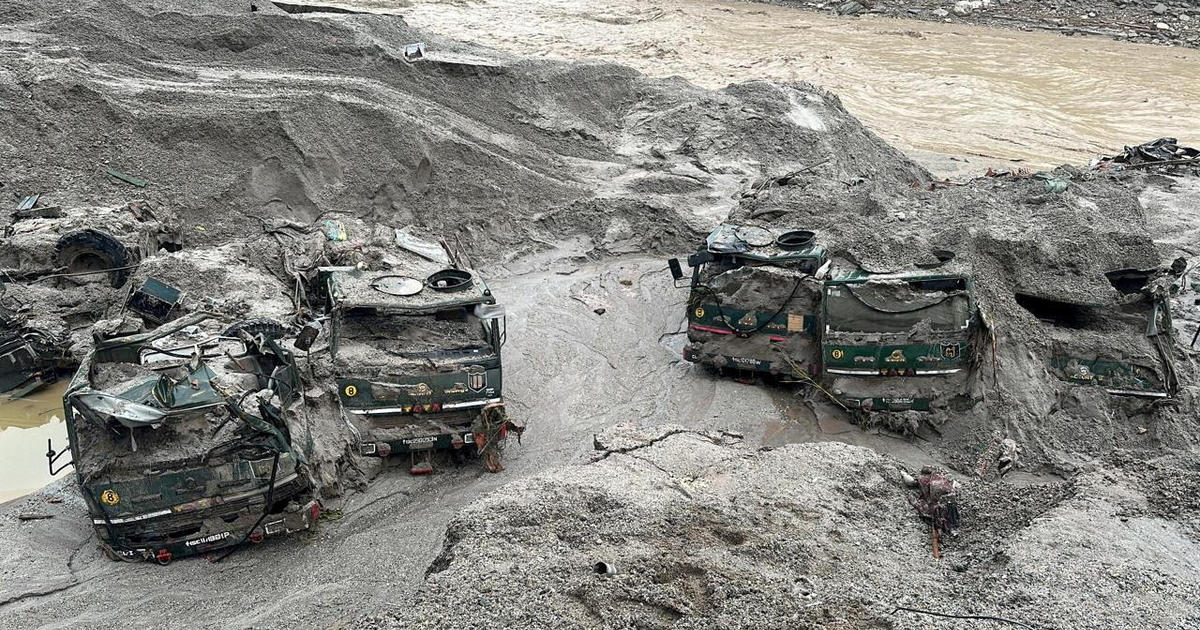New Delhi— The death toll from devastating flash floods unleashed by a glacial lake bursting its banks in India’s ecologically sensitive Himalayan region has risen to 40, according to government officials. The Lhonak Lake in India’s mountainous state of Sikkim overflowed on Wednesday after heavy rainfall triggered a cloudburst and avalanche, causing widespread flooding in the Teesta river.
The flooding resulted in extensive damage, with 15 bridges and numerous roads washed away or submerged. This has led to the isolation of significant parts of Sikkim, which is surrounded by China, Nepal, and Bhutan. The state’s only highway, which connects it to the rest of India, was also severely damaged, hampering relief and rescue efforts.
The death toll is expected to rise as more than 70 people, including 23 Indian Army soldiers, are still missing. Some bodies have been found downstream in the Teesta river, as far away as Bangladesh.
The Indian Army, despite suffering significant damage to its camps in Sikkim, has deployed teams for rescue and relief operations. They are planning to use helicopters to evacuate nearly 1,500 stranded tourists as the weather improves. The state government has reported that the disaster has affected the lives of approximately 22,000 people.
Scientists have warned of such disasters for decades
The recent flooding in India’s Himalayan region is one of the worst disasters to date, and it is part of a trend of extreme weather events linked to climate change. Last year, severe flooding in Sikkim claimed many lives and displaced tens of thousands of people. In 2021, a similar tragedy occurred in Uttarakhand when a glacial lake burst its banks.
Scientists have been warning about the melting of Himalayan glaciers for years, emphasizing that it poses a global threat. The melting of glaciers is accelerated by global warming, and the region’s high-mountain areas have warmed at twice the rate of the global average temperature increase since pre-industrial times.
In fact, as early as 2013 and 2001, experts warned about the high probability of a sudden outburst from Lhonak Lake. The melting of glaciers and the consequent formation of glacial lakes will continue throughout the 21st century, leading to an increased risk of such disasters.
A glaciologist at the Indian Institute of Technology Indore, Dr. Farooq Azam, stated that the breach of Lhonak Lake was predicted as early as 2021 due to the increasing length of the lake and its vulnerability to extreme weather events like cloudbursts.
With over 54,000 glaciers in the Hindu Kush Himalayan region, most of which are not regularly monitored, the frequency of such disasters is expected to rise. Climate scientists and researchers from the United Nations’ Intergovernmental Panel on Climate Change (IPCC) have expressed concerns about the region’s vulnerability to climate change.
Denial of responsibility! Vigour Times is an automatic aggregator of Global media. In each content, the hyperlink to the primary source is specified. All trademarks belong to their rightful owners, and all materials to their authors. For any complaint, please reach us at – [email protected]. We will take necessary action within 24 hours.



